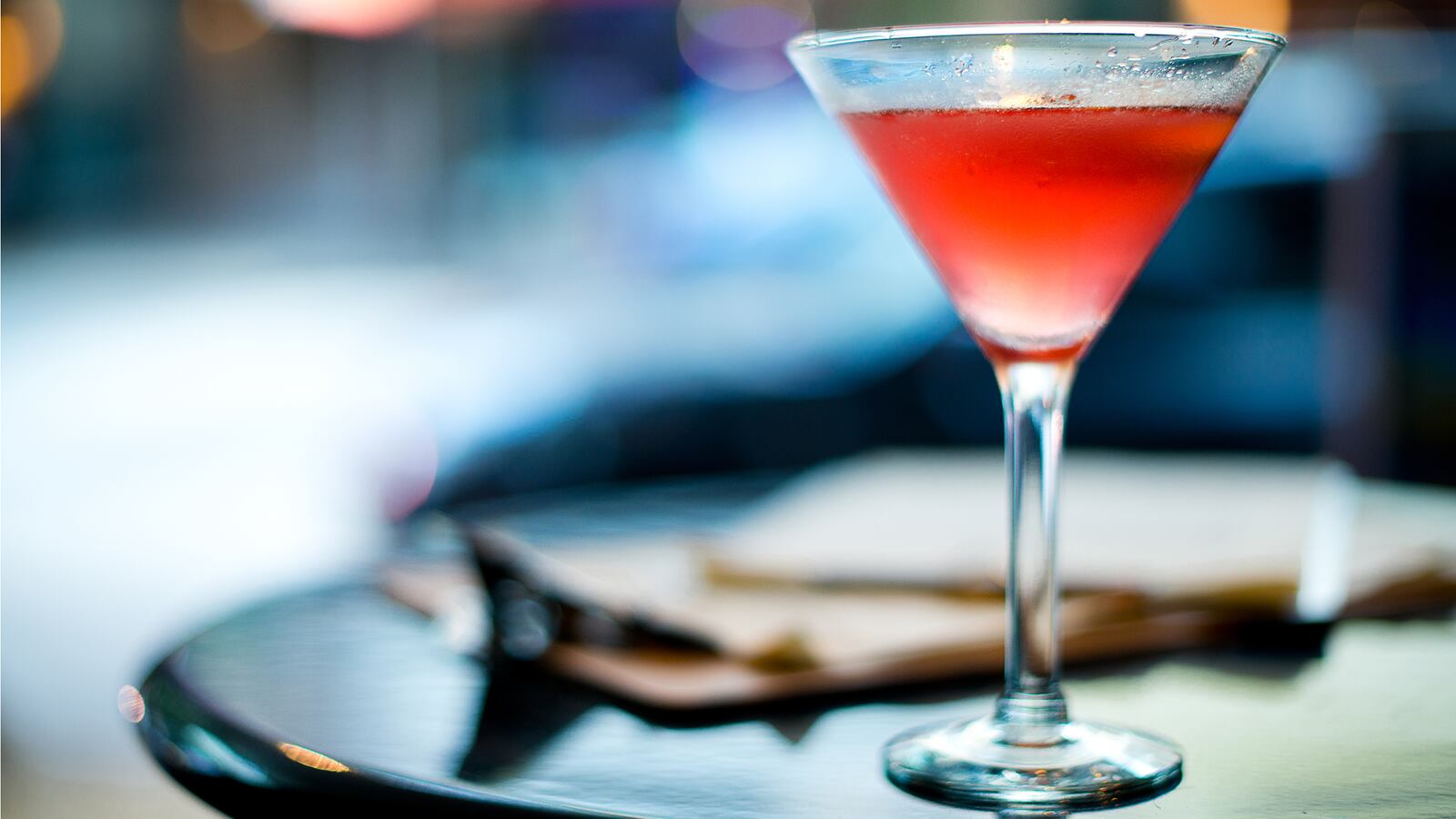Let me make sure I have this correctly: You take good, honest whiskey, distilled from fine, sweet Irish barley in a true, old-fashioned copper pot still as the Lord intended, and you put it not in a glass for the drinking thereof, as any sensible man or woman would do, but in a “mixing tin” (tin and whiskey—what a thought!) and then you contaminate it, or so I’m told, with fruit acids and sugar tortured forth from stalks of grass that grow in the muck and mud of the tropics (as if good whiskey isn’t sweet enough!); with mysteries such as “vermouth,” which claims to be some sort of wine and smells like the sweepings of an apothecary’s floor; with absinthy, a sort of liquid rat-poison, bitters (the very name of which is warning enough for the cautious), and gobbets of various cordials made in the depths of the European continent, each owing more to the perfumer’s art than the distiller’s.
Then you dilute the whole sad mess with water. Not the good, soft water of Glendalough or of the peaceful Barrow as it flows through quiet Knockanowl, but hard water; congealed water; frozen water; water in shards and spikes and nuggets. With this flinty stuff and that tin contraption you shake up your poor juice of the barley until it is thoroughly demoralized and can’t muster the strength to rid itself of any of those contaminants you have forced upon it. Then you disgorge the whole mess—perhaps holding back the remaining icy rubble with another mechanical contrivance—into a pitiful, teetering sort of glass, drop a lethal little bomb of carcinogen-colored cellulose into its murky depths and slide it across the bar to be drunk.
No, I don’t think I’ll be having one of your “Whiskey Cocktails,” thank you very much.
All that, anyway, is pretty much the traditional take on the Irish whiskey cocktail: Irish whiskey is pleasant enough to drink as it is, so why torture it? As a result, there are very few classic Irish whiskey cocktails on the books, and most of the ones that do turn up are not calculated to inspire. Sure, there’s the Irish Coffee, which is indispensable. Delve into the annals of mixology and you’ll also find the Emerald, alias the Angelo and Mike and half a dozen other names. Whatever you call it, it’s just an Irish whiskey Manhattan, which is quite pleasant but not anything to do backflips over.
The Irish Cocktail travels under as many names, but beneath all of them lies nothing more than a shot of Irish whiskey stirred up with splashes of syrup, bitters and various liqueurs. Is it better than the same whiskey straight? Probably not. There are a few others—e.g., Hot Irish Whiskey Punch (known in Ireland as “Hot Whiskey”), which is truly delightful, but you have to be in the mood for a hot drink; the Shamrock, a semi-villainous mix of “the creature” with dry vermouth, green Chartreuse and green crème de menthe, with a (green) olive (yes, that is a theme that you detect); and the Irish Porridge, where you stir the whiskey in an old-fashioned glass with sugar, ice and heavy cream and then grate nutmeg on top (that one doesn’t sound too bad, if you like cream). None of them, however, are world-beaters.
But what’s so wrong with merely pleasant? I have enjoyed many an Emerald in my time (and I swear I’m going to try that Porridge thing one of these days). A pleasant drink in unpleasant times is something to cling to, a reminder that life isn’t all chaos and decline and worse-to-come; that assholes can’t ruin everything.
There is one drink found in those old bar guides that is both uncommon and uncommonly pleasant. It comes from one “Honest Jake” Didier (1865-1945), an Albany, New York, native who worked at top bars in places such as Chicago and Detroit before settling in Binghamton, only a couple of hours from his birthplace. There, he opened the well-regarded Opera Saloon and set about committing his recipes to paper. His vest-pocket bartender’s guide, The Reminder, was published in 1909 and went into numerous editions. In the fifth edition, from 1917, he included a drink he called the “Irish Rose.”
If Didier hadn’t found this one, someone else would have, since all it is is a version of the then wildly-popular Jack Rose—applejack, lime juice and grenadine—made with Irish whiskey. Anyone could have come up with that one. That said, Didier is no dope: he actually turns his version into what was known as a “Daisy” by topping it off with a splash of soda water, just enough to give it a little prickle.
The resulting drink is as refreshing and pleasant (that word keeps coming up with Irish whisky drinks; indeed, with the good ones it’s unavoidable) as anything you’re likely to find. There is one improvement I would like to suggest, which is to replace the grenadine with raspberry syrup, whose slight muskiness fits in with the slight muskiness of the whiskey like shamrock fits in buttonhole.
Sure, it’s a sinful thing to do to good whiskey, but as the theologians tell us we’re all born to sin, so why the hell not?
Irish Rose
INGREDIENTS:
2 oz Irish whiskey, preferably pure pot still (such as Green Spot) or single malt (such as Bushmills 10-Year-Old)
.5 oz Fresh-squeezed lime juice
2 tsp Raspberry syrup or grenadine (the commercial stuff is fine here)
.5 oz Sparkling water
Glass: Cocktail
DIRECTIONS:
Add all the ingredients, except the sparkling water, to a shaker and fill with ice. Shake and strain into a chilled cocktail glass and top with the sparkling water.






